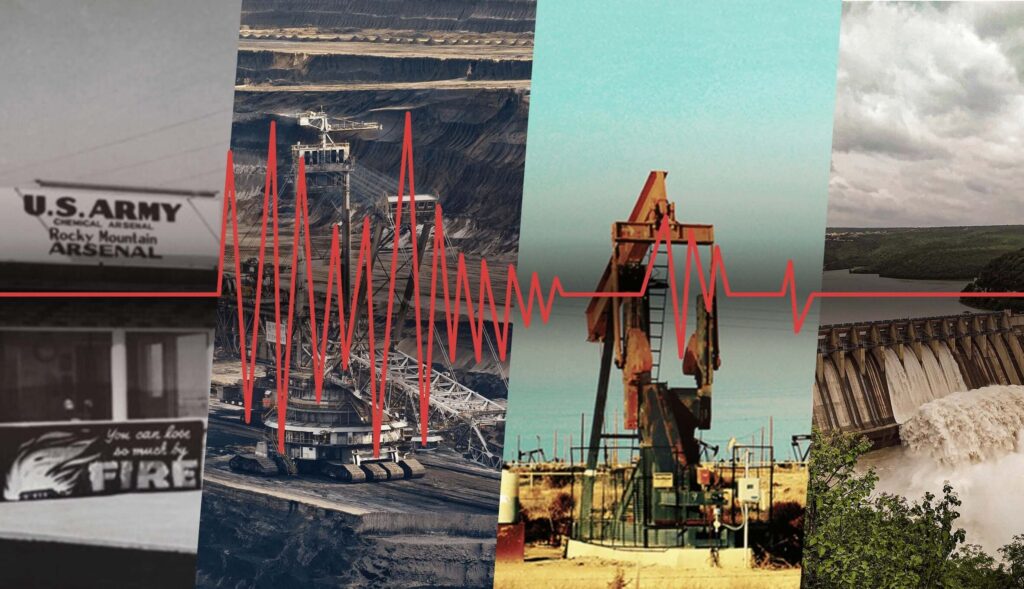Imagine you’re sitting peacefully in your home when a stranger walks up and blows a cloud of smoke right in your face. You have no choice but to inhale it. Sounds awful, right? This is a reality we all face, even if we don’t realize it. In some parts of the world, just breathing the air for a day is equivalent to smoking several cigarettes. The situation is particularly severe in countries like India, Bangladesh, China, and Pakistan.
To combat this pollution and its root causes, scientists are developing powerful new technologies. But ironically, one of the most promising solutions for cleaning our atmosphere comes with a startling side effect: it can cause human-induced earthquakes. How are our efforts to solve one problem potentially creating another?
The Global Warming Challenge
The core issue is global warming. An all-time high level of greenhouse gases in our atmosphere is causing temperatures around the world to rise. These gases act like a blanket, trapping the sun’s heat and steadily warming our planet.
This crisis was globally recognized in 2015 when more than 190 countries signed the Paris Climate Agreement. Through this historic treaty, nations committed to working together to limit the global temperature increase to well below 2°C (3.6°F) above pre-industrial levels by 2100.
The Real-World Effects of a 2°C Temperature Rise
A 2°C rise may not sound like much, but its consequences are catastrophic. Let’s put it in perspective:
- Ecosystem Collapse: The warming would be enough to destroy virtually all the world’s coral reefs, including the Great Barrier Reef.
- Coastal Cities Underwater: Major coastal cities like Mumbai, New York, Shanghai, and Melbourne could be partially submerged by rising sea levels.
- An Ice-Free Arctic: The Arctic may experience its first completely ice-free summer as early as 2040.
For many regions, including India, the impacts of climate change pose an exceptionally high risk. So, how could this already scary scenario become even more complicated with man-made earthquakes in the picture?
How can we fight global warming
To understand the connection, we must first identify the main driver of global warming: carbon dioxide (CO2). It’s the most prominent greenhouse gas responsible for the climate change we’re experiencing. In response, scientists and engineers worldwide are developing techniques to reduce CO2 in the atmosphere.
Among the portfolio of global warming solutions, the International Energy Agency has identified Carbon Capture and Storage (CCS) as a critical technology for tackling industrial CO2 emissions.
What is Carbon Capture and Storage (CCS)?
As the name suggests, CCS technology involves three main steps:
- Capture: CO2 is captured from large point sources, such as power plants or industrial facilities, before it can be released into the atmosphere.
- Transport: The captured CO2 is compressed and transported, usually via pipelines.
- Storage: The CO2 is injected deep underground into porous rock formations, where it is permanently stored.
Currently, global operational CCS facilities have the capacity to store nearly 50 million tonnes of CO2 per year. However, to meet the climate goals outlined in the Paris Agreement, experts project we will need to scale this up to capture and store billions of tonnes annually by 2050. That’s a volume comparable to the total amount of oil and gas we produce each year!
Figure 1 The carbon capture and storage process (Global CCS Institute)
The Disastrous Side Effect: Induced Seismicity
Every action has a reaction, and storing vast quantities of fluid deep underground is no exception. This practice can lead to induced seismicity—earthquakes caused by human activity.
A well-known example occurred in December 2006 near Basel, Switzerland. Residents began feeling mild tremors, which soon escalated into more rigorous shaking. The community experienced a 3.4 magnitude earthquake, strong enough to be widely felt and cause minor damage. An earthquake of magnitude 4 or 5 can cause serious damage.
The people of Basel were scared but also enraged. Their anger stemmed from the fact that this was not an “act of God.” These were man-made earthquakes. The culprit was a geothermal energy project nearby that involved injecting large amounts of water deep underground, which ultimately triggered the seismic event.
Closer to home, in 1967, the state of Maharashtra in India experienced a severe 6.3 magnitude earthquake near the Koyna Dam, a classic case of reservoir-induced seismicity. The devastating quake killed more than 150 people and injured over 2,000. These unfortunate disasters are a stark reminder that human activities can have powerful and unintended consequences on the Earth’s crust.
How can humans cause Earthquakes?
So, how exactly do we have the power to create earthquakes? The science behind what causes induced earthquakes is rooted in geology.
When we inject fluids like water or CO2 deep underground, the fluid flows into the microscopic empty spaces, or pores, within the rock. Think of these rocks as hard, brittle sponges. This fluid buildup increases the pressure in the pores, which can act as a lubricant for pre-existing, dormant fault lines.
An earthquake is essentially the sudden slip of huge rock masses along a fault, releasing a tremendous amount of energy. The injected fluid can reduce the friction holding a fault in place, making it easier for the rocks to slip. It doesn’t create the fault, but it can be the “last straw” that causes a stressed fault to rupture.
Dangers from human-induced earthquakes
Induced earthquakes pose a twofold threat. First, they present a direct danger to lives and property, just like natural earthquakes. Second, in the context of CCS, a significant seismic event could potentially damage the geological formation meant to contain the CO2. This could create new fractures in the rock, risking the escape of captured CO2 back to the surface or into underground sources of drinking water.
So how do we solve one massive problem—climate change—without creating another?
Tackling the Risk of Induced Seismicity
This is where the field of geomechanics—the study of how rocks behave under stress—becomes crucial. Geoscientists study the flow of CO2 through porous rocks to plan CCS activities more safely.
The key is careful site selection and management. Using advanced geomechanical modeling powered by supercomputers, scientists can:
- Map underground faults.
- Analyze the stress state of the rock.
- Simulate how the rock will react to fluid injection.
This allows them to select storage sites with stable geology, far from critically stressed faults. By managing injection pressures and monitoring seismic activity in real-time, operators can significantly reduce the risk of triggering a felt earthquake.
What About Just Planting More Trees?
At this point, you might be thinking: why not just plant more trees and avoid this whole issue?
Afforestation is absolutely essential in the fight against climate change and must be pursued aggressively. But unfortunately, the scale of our CO2 emissions means it is no longer enough on its own. Atmospheric CO2 levels are rising too quickly for natural solutions to keep up. To effectively stop global warming, we need to deploy every tool available to us.
Climate Change and Our Planet’s Future
CCS remains one of our most powerful technological weapons in the battle against the climate crisis. The challenge lies in learning to wield it safely and effectively.
One thing is certain: climate change is one of the greatest threats humanity has ever faced. We may be past the point of reversing it completely, but with the power of science, technology, and careful management, we can continue our fight to mitigate its worst impacts and secure a safer future for our planet.
Read More
- https://en.wikipedia.org/wiki/Induced_seismicity
- https://www.sciencedirect.com/science/article/pii/S001282521730003X
Footnote: The research studies on induced seismicity are a prime example of interdisciplinary STEM work. The research methodology in this field combines quantitative research from geomechanics with computer science for modeling and the analysis of geospatial information. As a critical area of environmental science, findings are published in top international journals and scholarly sources, making it a vital topic for any scholar pursuing advanced research.














